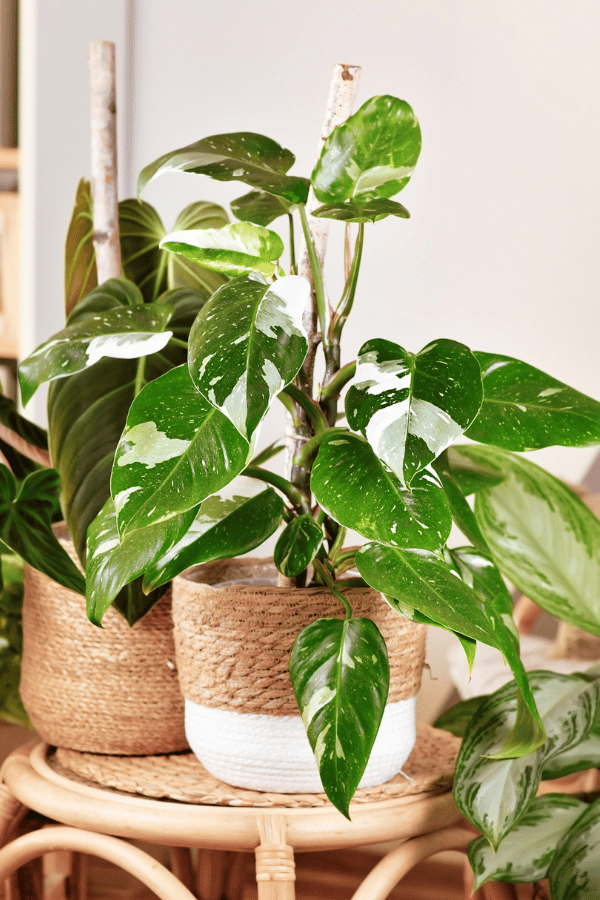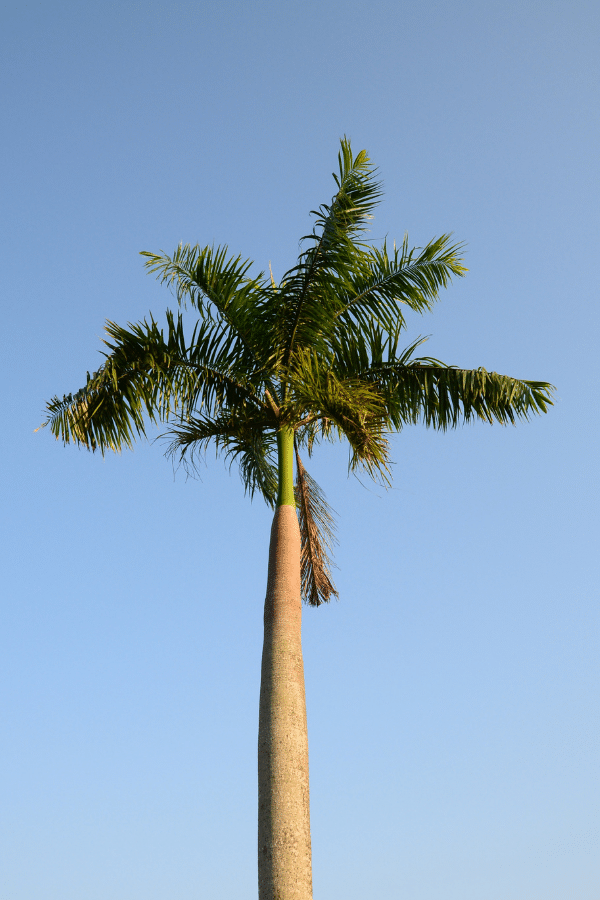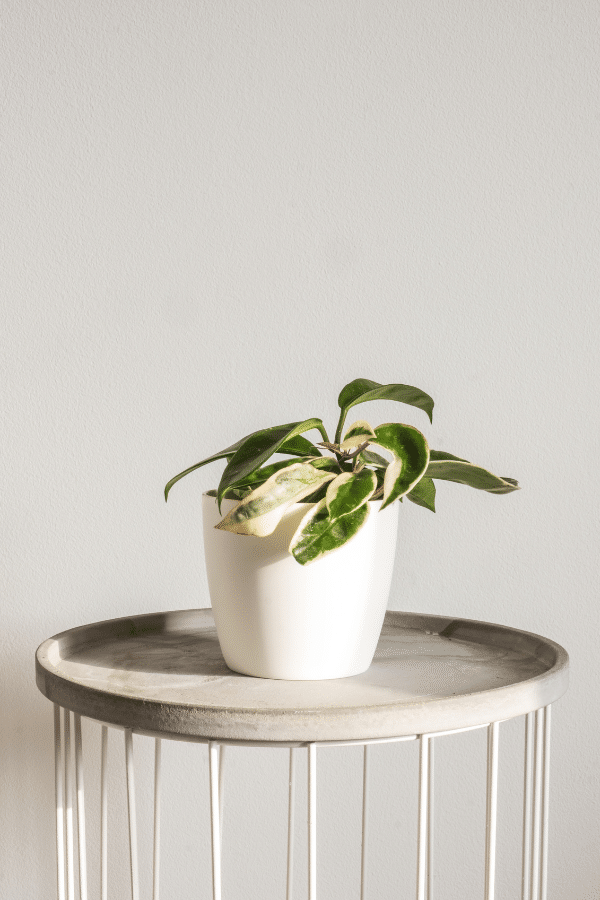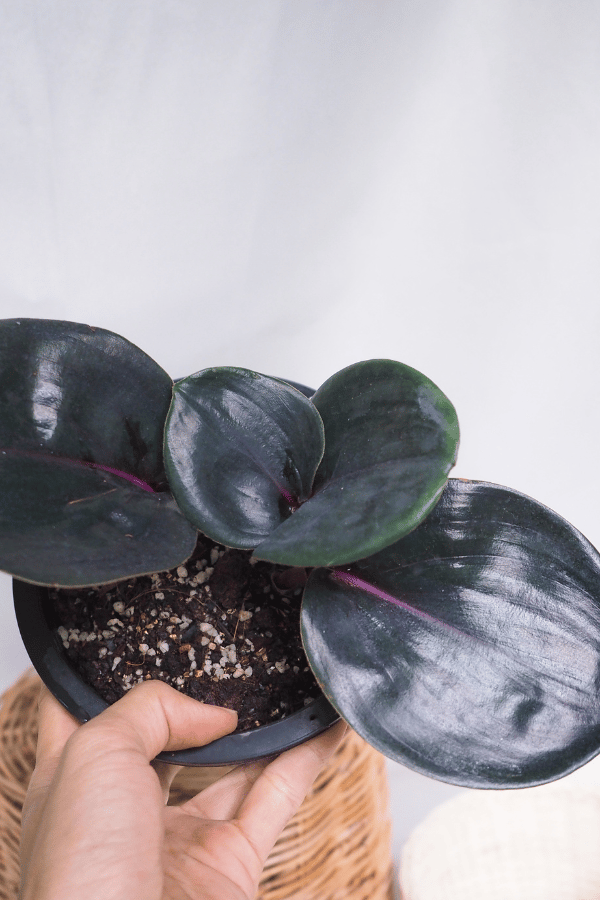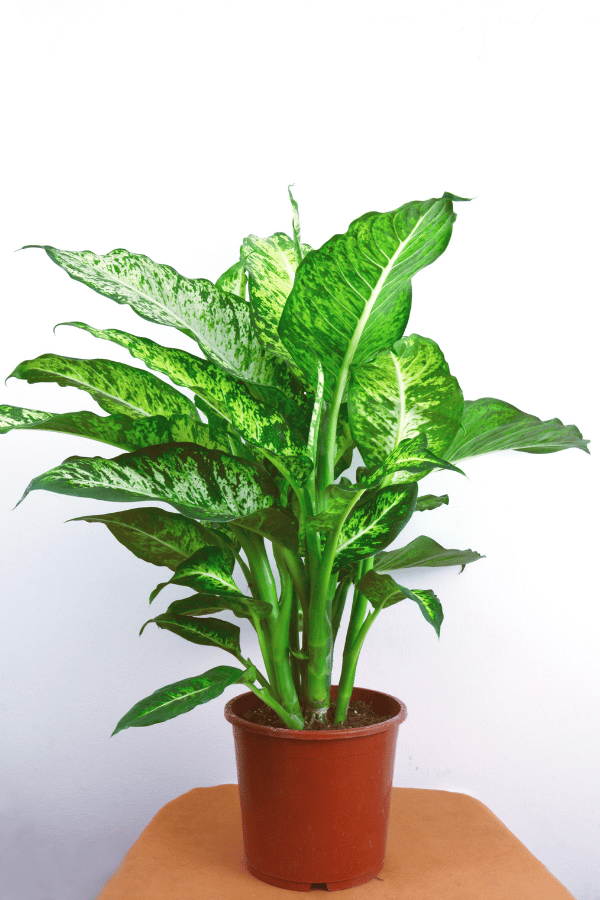Philodendron Prince of Orange
Scientific Name: Philodendron Prince of Orange
Common Name: Philodendron Prince of Orange
Philodendron Prince of Orange care is an easy to care for houseplant. Mimicking its natural environment of South America will help to create a thriving indoor plant. To keep this plant growing newly bright orange leaves, follow these specific care items we lay out in this article.
Quick Care Overview
| Common Name | Philodendron Prince of Orange |
| Scientific Name | Philodendron Prince of Orange |
| Family | Araceae |
| Origin | South America |
| Growth Rate | Medium |
| Identification | Oval elongated leaves with orange to green color |
| Height | Up to 2 feet tall |
| Soil | Well-draining, airy potting mix |
| Water | Water only after top inch of soil has dried |
| Temperature | 65-78F |
| Sunlight | Bright indirect sunlight |
| Toxic to Cats & Dogs | Yes |
| Toxic to Humans | Yes |
| Pests | Aphids, moths, mealybugs, fungus gnats, thrips |
| Diseases | Root rot |
Below we will dive deep into how to care for Philodendron Prince of Orange.
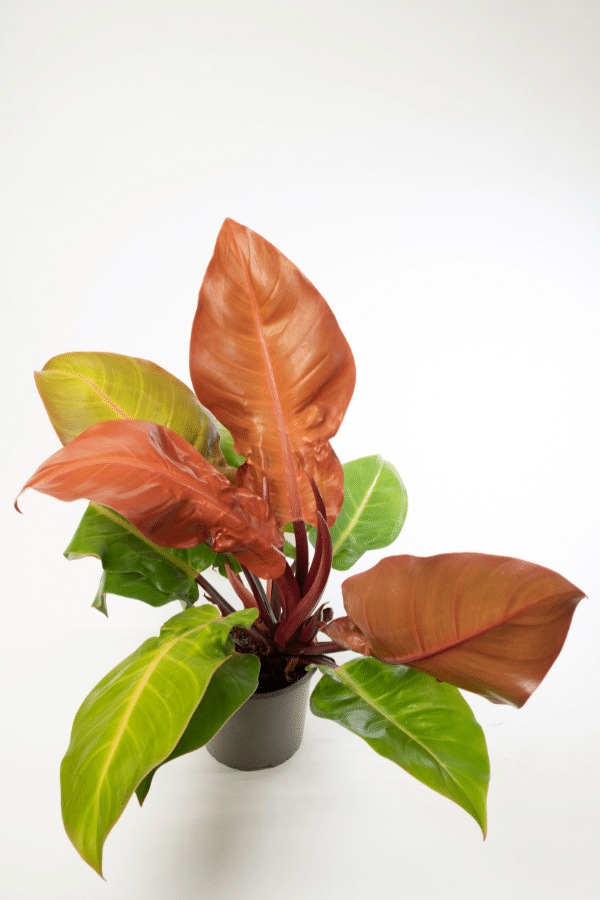
Philodendron Prince of Orange History
A fabulously bright and unique Philodendron, known by the name ‘Prince of Orange’, is a hybrid plant hailing from South America. Being a tricolor ornamental epiphyte, this plant is prized for its transforming foliage that is full of color. Leaves change from orange to yellow to green. Unlike other Philodendrons, this cultivar is a compact, non-climber with new leaves sprouting from its center base. Having vibrant foliage that changes colors throughout its growth cycle, this Philodendron is sure to grab your attention.
Philodendron Prince of Orange Identification
This Philodendron presents with striking oval, elongated leaves growing from the center of the plant. Upon maturation, leaves transform from yellow to copper to green. ‘Prince of Orange’ has a bush-like growth habit.
Philodendron Prince of Orange Growth Facts
This Philodendron remains compact and bush-like, unlike other trailing relatives. Being relatively slow growing and compact, this makes a perfect floor plant for smaller space.
How Big Does a Philodendron Prince of Orange Get?
Philodendron Prince of Orange grows to be as tall as two feet tall.
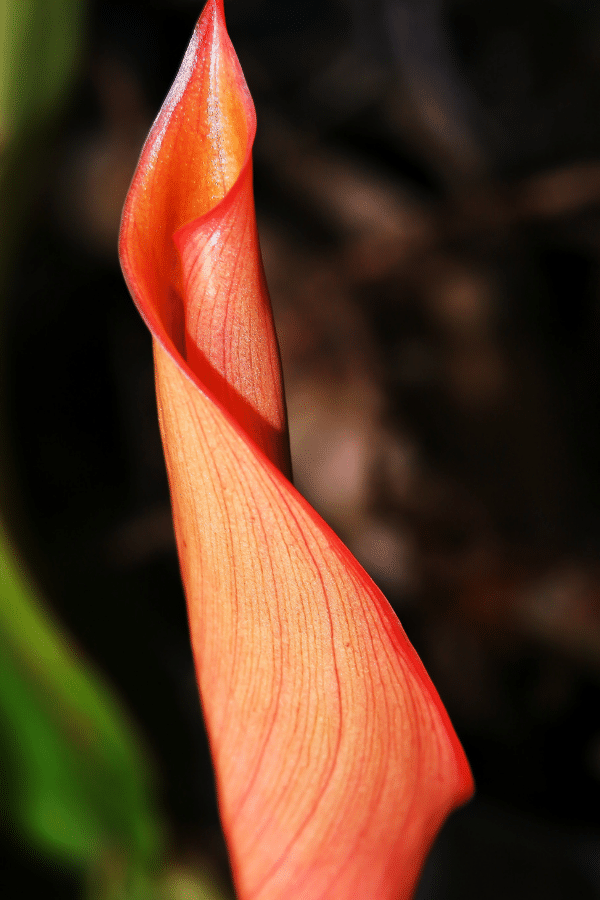
Philodendron Prince of Orange Care
Being easy to care for and a very attractive plant with its vibrant, changing foliage, this Prince of Orange Philodendron is perfect for beginners.
Searching for a new houseplant?
Take our houseplant quiz to see what your next plant should be based on the room it’s in, the specific lighting the room receives, if you want it on the floor or on the table, and much more!
Philodendron Prince of Orange Soil
Philodendron Prince of Orange requires a well-draining, airy potting mix to support its best growth and to produce large leaves. Soilless mixes such as peat moss, peat-perlite, or peat-vermiculite are excellent choices for a growing medium for this plant.
Philodendron Prince of Orange Fertilizer
Prince of Orange will enjoy a regular monthly feeding of balanced, liquid fertilizer indicated for houseplants throughout the growing season. Reduce the feeding frequency in the fall and winter months to about every two months. Ensure to follow all label instructions and do not overfertilize, as this may lead to chemical burn.
Philodendron Prince of Orange Watering
This Philodendron likes to remain consistently moist but not waterlogged. Rewater after the top two inches of soil has become dry. Do not overwater or allow this plant to stand in sitting water in its tray.
Philodendron Prince of Orange Light Requirements
The Prince of Orange plant prefers to be grown in bright indirect light. Do not allow your Philodendron to be put in direct sunlight, as this will cause leaf burn. It is recommended to regularly rotate your plant towards the light to aid in consistent, uniform growth. Additionally, dusting the leaves may aid in light absorption which will help to increase its growth.
Philodendron Prince of Orange Temperature & Humidity
Being a tropical plant, this Philodendron thrives in a warm, humid environment. Prince of Orange prefers to be kept at a warmer temperature between 65 to 78F. Do not allow your Philodendron to reach temperatures below 55F, as this may cause significant damage. Prince of Orange Philodendron appreciates a humidity level of around 50%. In the summertime, the average household humidity will suffice for this plant. But in winter, this Philodendron will enjoy frequent misting to aid in raising the humidity level. Alternatively, you may use a pebble tray or humidifier to provide adequate humidity levels for your plant.
Repotting Philodendron Prince of Orange
You should repot your Philodendron annually in the spring. Select a container that is 1-2 inches larger in diameter than the current pot. Gently loosen your Prince of Orange from its container, place the root ball into the new container, and surround it with fresh, well-aerated soil. Tamp and water thoroughly, place in indirect light.
Philodendron Prince of Orange Maintenance & Pruning
This Philodendron does not require regular pruning as it is a non-climbing Philodendron and stays relatively compact. Instead, remove old, dying, or discolored leaves and stems using sterilized shears. Removing old stems will encourage new growth from the base of the plant.
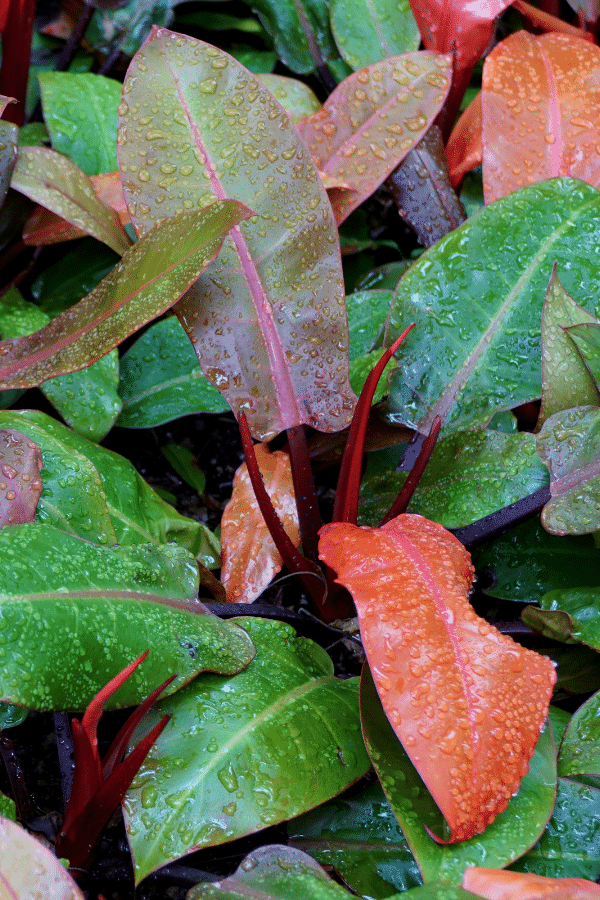
Philodendron Prince of Orange Propagation
Propagating Prince of Orange is easy by taking stem cuttings and planting them into soil. During the warm growing season, take a cutting of stem from just above the node. Be sure there are a few leaves on the cutting. Allow the stem to callus overnight. Plant the stem cutting in a well-draining growing medium on the following day. Water thoroughly and place in indirect light. Your cutting should grow roots within one month, and you will also notice new shoots coming up. Alternatively, Prince of Orange may be grown by seed. Always propagate Prince of Orange Philodendron in spring or summer.
Philodendron Prince of Orange Toxicity
Philodendron Prince of Orange is a toxic plant, like many other Philodendrons.
Toxicity to Humans
Like many other plants in the Philodendron family, Prince of Orange is considered toxic to humans due to its calcium oxalate crystal content. Do not consume any portion of this plant.
Toxicity to Cats & Dogs
Prince of Orange is toxic to pets. Do not allow your pets to consume any part of the plant. If you believe you pet has ingested this plant, call your veterinarian or animal poison control immediately.
Philodendron Prince of Orange Problems
Philodendron Prince of Orange Leaves Turning Yellow
Yellowing of the leaves of this plant is often indicative of overwatering, which may lead to fungal or bacterial infection of the roots. Ensure that your plant has proper drainage and is not left to sit in standing water.
Philodendron Prince of Orange Leaves Turning Brown
When the leaves of this Philodendron turn brown, it is commonly a sign of underwatering. Ensure that your plant is receiving consistent moisture and is not allowed to completely dry out between watering.
Philodendron Prince of Orange Diseases
While largely considered disease-resistant, this Philodendron may experience fungal or bacterial issues due to overwatering.
Philodendron Prince of Orange Pests
Although this plant is considered pest-resistant, it may become susceptible to aphids, moths, fungus gnats, mealybugs, or thrips on rare occasions. Upon identifying a pest infestation, apply a pesticide such as insecticidal soap or neem oil.
FAQ
Does Philodendron Prince of Orange Climb?
Philodendron Prince of Orange is a compact plant and will not climb or trail.
How Do I Make My Philodendron Prince of Orange More Orange?
The new leaves coming from this plant are bright orange. After the leaves get more mature, they turn to a light green. In order to get more orange leaves, give it good indirect light to get new growth and more orange foliage.
Should I Mist My Philodendron Prince of Orange?
Prince of Orange Philodendron loves to be misted. Mist your plants to achieve a humidity of around 50%. You can also add a humidifier next to your plant.
Does Prince of Orange Revert?
The new leaves on the Prince of Orange are orange and once matured, they turn green, so no the Prince of Orange does not revert.

